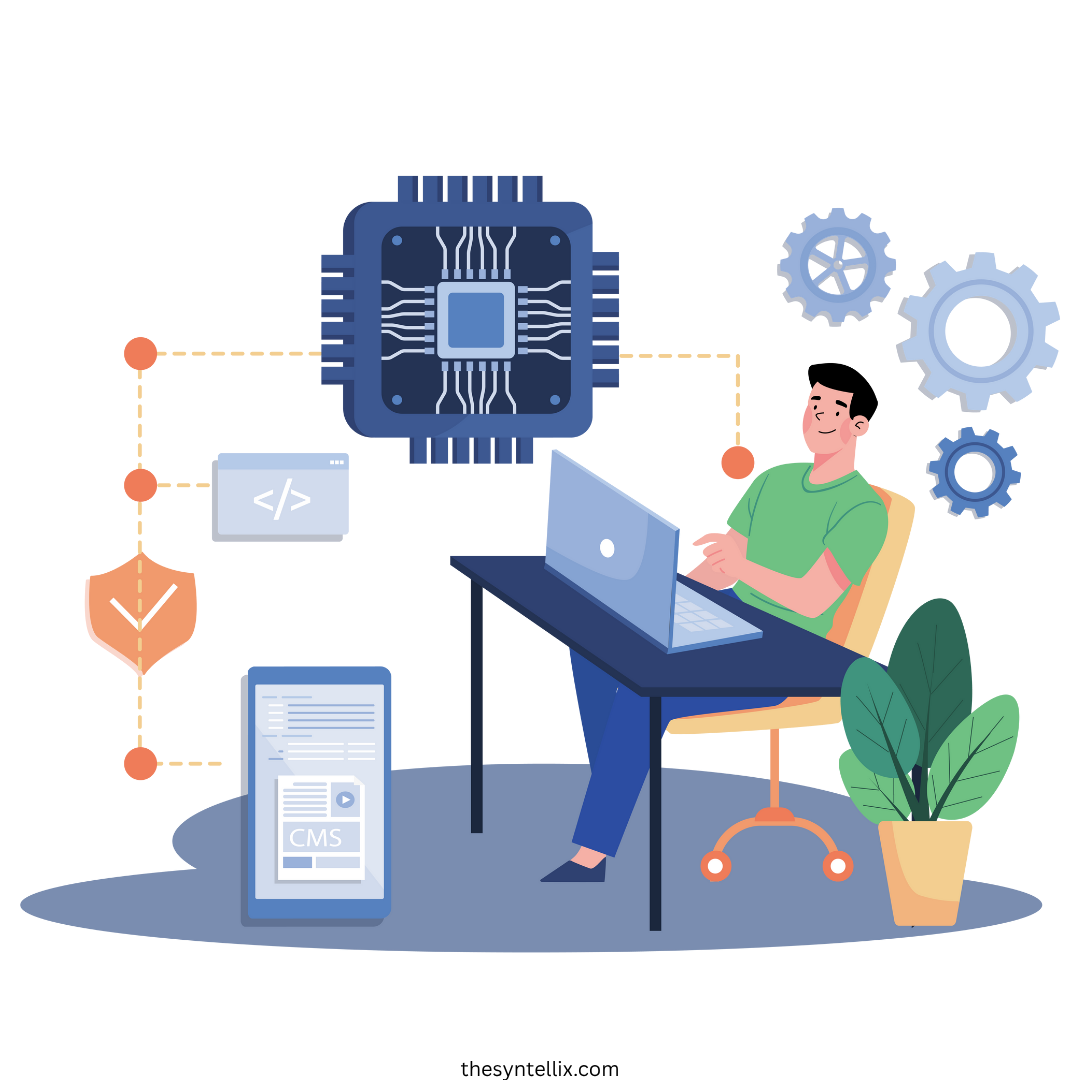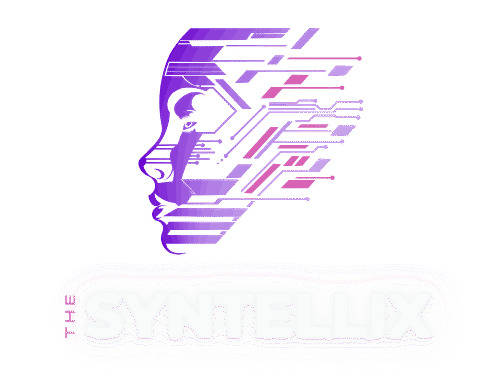The concept of AI agents comes up when you are a single busy person loves to do all the work by yourself. From replying to hundreds of emails to build a new strategy to increase company’s sales, AI agent can be your best friend. Imagine your AI agent is replaying to all the emails(also thinks as you thinks), all your business meetings are scheduled, your presentation is ready even if you don’t ask them to create( because they can take decision by themselves). All these scenario looks amazing! Right? It is no magic, It is the basic power of AI agents. Lets explore what are AI agents and How do they work.
What are AI agents?
AI agents are software systems that uses Generative AI to solve the user’s tasks on the behalf of themselves. They have the power to learn, plan, justify and save. They can do all these because they have both Generative AI and AI foundation models. They can process multimodal information such as text, audio voice, video and images. They can learn your business model and make the best decision according to trained data. They can continuously learn by themselves.
All AI agents must follow these four simple Rules
- It can adapt its environment.
- Decision must be based on observations.
- A decision should be followed by some action.
- They can be able to justify its decisions.
Some Basic Features of AI Agents
As we talk earlier AI agents are made according to your needs. But All AI agents must have some basic features. These are
Planning
A successful work is done when it is planned well. AI agents have the basic feature to plan a specific successful strategy to perform any task. This process involves planning about all the future states of the task and taking the best solution as possible.
Observing
In order to make informed decisions AI agents gather all the information about the task, understand the context or situation through perception. The perception can be of the form natural language processing, computer vision etc.
Decision Making
AI agents have decision making capability. They can strongly analyze data, identify data patterns, and be able to make informed decisions based on the true evidence or context.
Collaboration With Others
AI agents can collaborate with others effectively including humans or with other AI agents. Collaboration includes best communications, coordination and giving respect to others point of view.
Self-improvement
AI agents can learn by themselves. They can learn from experience, give the best feedback based on the behavior of others. They can improve themselves by machine learning techniques, optimization algorithms etc.
How AI agent works
As we talk earlier AI agents is no more than a digital assistant. It is continuously cycling through a loop of perception, decision making and some actions to achieve its goals.
The process starts when the AI agents receives input from its environment (can be through sensors, APIs, or other data streams). The input taken from environment is processed by its internal model (often a machine learning or rule-based system) which analyzes the given information to understand the context, detect patterns, and determine the best course of action.
For example, a customer service AI agent might read a user’s question, break it down into intent and key details, and then consult its knowledge base or a large language model (LLM) to generate a relevant response. If the agent has memory capabilities, it may also reference past interactions to refine its answer.
Once a decision is made, the agent executes an action—such as sending a reply, triggering an automated workflow, or adjusting a smart home device.
Advanced AI agents can also learn from feedback, improving their future responses by analyzing whether their actions successfully resolved the task.
This entire process—from sensing the environment to taking action—happens in milliseconds for simple agents, while more complex ones may involve multi-step reasoning, external tool usage (like web searches or database queries), and iterative refinements before delivering a final output. The agent’s effectiveness depends on its design: some follow strict pre-programmed rules, while others leverage adaptive AI models that handle ambiguity and evolve over time. However, despite their sophistication, AI agents still operate within defined boundaries and rely on human oversight to correct errors, update knowledge, and ensure ethical operation.
What Is The Difference Between AI Agents And LLM’S
At their core, large language models (LLMs) and AI agents serve fundamentally different purposes—one is designed to generate intelligent responses, while the other is built to take intelligent actions.
Think of an LLM as a brilliant conversationalist who can discuss nearly any topic but can’t lift a finger to change the real world. It excels at understanding and producing human-like text, answering questions, summarizing documents, or even writing poetry—but it operates purely in the realm of language, with no ability to act beyond generating words.
An AI agent, on the other hand, is more like a skilled assistant who not only understands what you say but can also execute tasks on your behalf. It combines language understanding (often powered by an LLM) with decision-making logic and tools that allow it to interact with software, databases, APIs, or even physical systems.
For instance, while an LLM can describe how to book a flight, an AI agent can actually check prices, compare options, and reserve a ticket—then send you the confirmation.
The key distinction lies in agency: LLMs simulate knowledge, while AI agents apply it to produce real-world outcomes. Many modern AI agents actually use LLMs as their “brain” for processing language, but they go a step further by integrating with external systems to turn words into actions. In essence, LLMs are the talkers, and AI agents are the doers.
The key diffrences
| Feature | AI Agents | LLMs (e.g., ChatGPT, Gemini, Claude) |
|---|---|---|
| Primary Function | Take actions to achieve goals (e.g., automate tasks, control systems) | Generate human-like text based on input |
| Capabilities | Can perceive, decide, and act (e.g., book flights, adjust smart devices) | Only process and generate text (no direct actions) |
| Memory & Learning | May retain past interactions and improve over time (if designed to) | Stateless by default (no memory between chats unless programmed) |
| Autonomy | Can operate independently to complete tasks (e.g., schedule meetings, monitor data) | Requires human prompts; cannot act on its own |
| Real-World Interaction | Can connect to APIs, databases, and devices (e.g., send emails, control robots) | Limited to text responses (no direct external interactions) |
| Decision-Making | Uses logic, rules, or AI models to make choices (e.g., “If X, then do Y”) | Predicts the next best word (no true reasoning) |
| Example Use Cases | Customer service bots that resolve tickets, self-driving cars, smart home systems | Chatbots, content writing, translation, Q&A |
| Strengths | Executes tasks, automates workflows, interacts with real-world systems | Human-like conversation, creativity, knowledge synthesis |
| Limitations | Needs proper programming; errors can have real-world consequences | Can hallucinate (make up facts); no action-taking ability |
Conclusion
Think of AI agents as your ultra-efficient digital sidekick—they don’t just chat, they get things done. While tools like ChatGPT excel at conversation, AI agents go further: they automate emails, schedule meetings, analyze data, and even make decisions for you. They learn, adapt, and handle real-world tasks so you can focus on what matters. They are not perfect (yet), but they are transforming work from “I’m swamped” to “I have got this”—and that is the real magic. Ready to let an AI agent enhance your productivity? The future is already here.
People Also Ask
What are the 5 types of AI agents?
AI agents are typically categorized based on how they perceive and interact with their environment. The five main types are:
-
Simple Reflex Agents – These act only on current percepts (what they sense right now). They don’t consider history or future consequences.
-
Model-Based Reflex Agents – They maintain internal state (memory of the past) to make better decisions.
-
Goal-Based Agents – These make decisions to achieve a specific goal, often evaluating different actions to get there.
-
Utility-Based Agents – They consider goals and also the “happiness” or utility of outcomes, choosing the most beneficial one.
-
Learning Agents – These can learn from experience and improve their behavior over time, adapting to new environments or tasks.
Who are the Big 4 AI agents?
The “Big 4” AI agents typically refer to the leading AI-powered virtual assistants or platforms from major tech companies:
-
ChatGPT (OpenAI) – A conversational AI that can generate text, write code, answer questions, and more.
-
Gemini (Google) – Formerly Bard, now an advanced AI assistant integrated across Google services.
-
Claude (Anthropic) – Known for being helpful, harmless, and honest with long-context capabilities.
-
Copilot (Microsoft + OpenAI) – Integrated into Microsoft 365 tools like Word and Excel to assist users intelligently.
These aren’t just “chatbots” – they’re multi-functional AI agents capable of reasoning, summarizing, coding, and more.
Is ChatGPT an AI agent?
Yes, ChatGPT is a highly advanced AI agent developed by OpenAI. It’s based on large language models (like GPT-4o) and designed to interact in natural language. As an AI agent, it can perform tasks like:
-
Answering questions
-
Writing content
-
Coding
-
Providing recommendations
-
Assisting in real-time problem-solving
In newer versions, ChatGPT can also use tools, remember context, and interact across apps, making it an even more intelligent agent.
Which is the best AI agent?
The “best” AI agent depends on your needs. Here’s a quick comparison:
-
ChatGPT (OpenAI) – Best for general-purpose tasks, creativity, coding, and integrations via API and apps.
-
Gemini (Google) – Great for search-based answers and integration into Google Workspace.
-
Claude (Anthropic) – Known for long-context processing and ethical responses.
-
Copilot (Microsoft) – Ideal for productivity tasks within Word, Excel, Outlook, etc.
If you’re looking for overall flexibility and power, ChatGPT (especially with GPT-4o) is often considered the most well-rounded.

Stay ahead of the curve with the latest insights, tips, and trends in AI, technology, and innovation.

